Soldiers of the Holy See: the army of the Pope
For more than a millennium, the Roman popes had not only spiritual authority over the entire Catholic world, but also secular authority over a large territory in the center of the Apennines peninsula. Back in 752 AD The king of the Franks, Pepin, donated the lands of the former Exarchate of Ravenna to the Pope, and in 756 the Papal Region arose. With intermediate periods, the pontiff's dominion over the Papal States continued until 1870, when, as a result of the unification of Italy, the secular authority of the pope over the territories of the central part of the peninsula was abolished.
The papal state, despite the rather large territory and the unconditional spiritual authority of the popes in the Catholic world, has never been particularly strong politically and economically. The strengthening of the Papal States was hindered by the constant feudal feuds between the Italian aristocrats, who dominated its individual parts and vied for influence under the Holy See. Moreover, since the popes were celibate and could not inherit the secular power, the Italian aristocrats also vied for the place of the pontiff. The death of another pope entailed fierce competition from representatives of noble families, who had the rank of cardinal and could claim the Vatican throne.
The entire first half of the XIX century, which was the period of the decline of the Papal States as a sovereign state, was for the possession of the pontiff a period of socio-economic and political crisis. The secular government of the pope was distinguished by an extremely low degree of efficiency. The country did not actually develop - rural areas were given over to exploitation by secular and spiritual feudal lords, constant peasant unrest occurred, and revolutionary ideas were spread. In response, the pope not only strengthened the police persecution of dissidents and strengthened the armed forces, but also relied on cooperation with gangs of robbers operating in rural areas. Most of all, the pope at this time feared the threat of his state’s absorption from neighboring Piedmont, which had gained political and military power. At the same time, the Pope was not able to resist the Piedmont’s policy of expanding the territory and preferred to rely on the help of France, which had an efficient army and acted as a guarantor of the safety of the holy throne.
However, one should not think that the Papal States was a purely innocuous state, deprived of its own defense forces. Until the unification of Italy and the cessation of the Papal States, the latter had its own armed forces, used not only to protect the papal residence and maintain public order in Rome, but also for constant conflicts with neighbors, and then with Italian revolutionaries who saw the existence of The Papal States directly impede the development of modern Italian statehood. The Armed Forces of the Papal States are one of the most interesting phenomena in Italian and European military history in general. As a rule, their recruitment was carried out by hiring mercenaries from neighboring European countries, primarily Swiss, who were famous throughout Europe as unsurpassed warriors.
Papal Zouawes - International Volunteers in the Vatican Service
However, before turning to the story of the Swiss Guard and the other two, now non-existent, Vatican Guards, it is necessary to elaborate on such a unique military formation as the Papal Zouavy. Their formation comes at the beginning of the 1860s, when the national revival movement and the Vatican began in Italy, fearing for the security of possessions in the center of the peninsula and political influence in the region as a whole, decided to create a volunteer corps, staffing it with volunteers from all parts of the world.
The then military minister of the Holy See, Xavier de Merood, a former Belgian officer who graduated from a military academy in Brussels and served in the Belgian army for a while, after which he became a priest and made a good church career, initiated the formation of a volunteer army. Under the Holy See, Merode was in charge of Roman prisons, then appointed Minister of War. A cry was made throughout the Catholic world about recruiting young people who professed Catholicism and were not married to protect the Holy See from the “militant atheists” - the Italian Rissorstimento (national revival ). By analogy with the well-known French corps of the colonial troops - the Algerian Zouaves - the volunteer unit formed was called the “Papal Zouavy”.
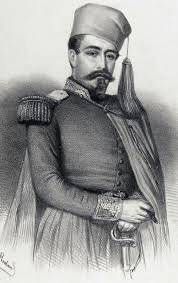 Zuav means a member of the zavisya - the Sufi order. Obviously, this name was given to the papal volunteers by French General Louis de Lamoricier, appointed to the post of commander of the Papal States. Christophe Louis Leon Juusault de Lamoricier was born in 1806 in Nantes, France, and spent a long time in French military service, having participated in the colonial wars in Algeria and Morocco. 1845 to 1847 General Lamoricier served as Governor-General of Algeria. In 1847, it was Lamoricier who captured the leader of the Algerian national liberation movement Abd al-Qadir, thereby completely demoralizing the Algerian resistance and contributing to the complete conquest of this North African country by the French. In 1848, Mr. Lamoricier, who was a member of the French Chamber of Deputies at the time, was appointed commander of the National Guard of France. For the suppression of the June uprising in the same year, Lamoricier was appointed Minister of War of France. It is noteworthy that for some time he was in the position of Ambassador Extraordinary in the Russian Empire.
Zuav means a member of the zavisya - the Sufi order. Obviously, this name was given to the papal volunteers by French General Louis de Lamoricier, appointed to the post of commander of the Papal States. Christophe Louis Leon Juusault de Lamoricier was born in 1806 in Nantes, France, and spent a long time in French military service, having participated in the colonial wars in Algeria and Morocco. 1845 to 1847 General Lamoricier served as Governor-General of Algeria. In 1847, it was Lamoricier who captured the leader of the Algerian national liberation movement Abd al-Qadir, thereby completely demoralizing the Algerian resistance and contributing to the complete conquest of this North African country by the French. In 1848, Mr. Lamoricier, who was a member of the French Chamber of Deputies at the time, was appointed commander of the National Guard of France. For the suppression of the June uprising in the same year, Lamoricier was appointed Minister of War of France. It is noteworthy that for some time he was in the position of Ambassador Extraordinary in the Russian Empire. In 1860, Mr. Lamoricier accepted the offer of the Minister of War Xavier de Meroda to lead the papal troops, who were leading the defense of the Papal state from the neighboring Sardinian kingdom. The Kingdom attacked the Papal States after the population of Bologna, Ferrara and Ancona, where a powerful popular movement was growing, in 1860 held a nationwide vote, in which the absolute majority decided to annex the papal possessions to the territory of the Sardinian kingdom. Frightened, the pontiff set about to accelerate the reform and enlargement of his armed forces. War Minister Merod turned for help to Lamoricier, whom he knew as an excellent military specialist. Most likely, it was the Algerian experience of Lamoricier that the papal volunteers were obliged by their name - due to their service in North Africa, the French general often faced the Zouaves and was inspired by their valor and high fighting qualities.
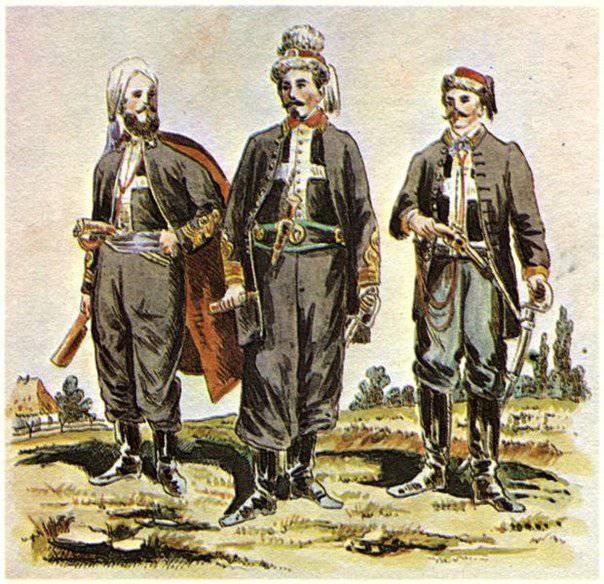
The papal Zouaws wore military uniforms, resembling uniforms of the French colonial shooters, the Zouaves, who were recruited in North Africa. The differences in the form consisted in the gray color of the uniforms of the papal zouav (French Zouavas wore blue uniforms), as well as the use of the North African fez instead of caps. By May 1868 there were a 4592 soldier and officer in the papal regimental regiment. The division was completely international - volunteers were actually recruited from virtually all countries of the world. In particular, the regiment served 1910 Dutch, 1301 Frenchman, 686 Belgians, 157 citizens of the Papal States, 135 Canadians, 101 Irishman, 87 Prussians, 50 English, 32 Spaniard, 22 German from other states except Prussia, 19 Swiss, 14 Americans, 14 Neapolitans, 12 citizens of the duchy of Modena (Italy), 12 Poles, 10 Scots, 7 Austrians, 6 Portuguese, 6 people duchy of Tuscany (Italy), 3 Maltese, 2 Russians, according 1 volunteer from India, Africa, Mexico, Peru and Circassia. According to the Englishman Joseph Powell, in addition to the listed volunteers, the regiment of the papal Zouavs consisted of at least three Africans and one Chinese. From February 1868 to September 1870, the number of volunteers from French-speaking and Catholic Quebec - a province of Canada - increased many times. The total number of Canadians in the papal zouav regiment reached 500 people.
The papal Zouaves participated in many battles with the Piedmont troops and garibaldists, including the Battle of Mentane 3 in November 1867, where the papal troops and their French allies clashed with Garibaldi volunteers. In this battle, the papal Zouaves lost the 24 soldiers to the dead and the 57 to the wounded. The youngest victim of the battle was the seventeen-year-old Englishman Zuav Julian Watt-Russell. In September Xoux Zuawa participated in the last battles of the Papal State with the troops of the already united Italy. After the defeat of the Vatican, several Zouans, including a Belgian officer who refused to surrender weaponwere executed.
The remnants of the papal zouavs, primarily the French by nationality, went over to the side of France, being renamed “Western Volunteers” while retaining the gray-red papal uniform. They participated in repelling the attacks of the Prussian army, including near Orleans, where 15 Zouaves were killed. The 2 battle of 1870 took place on December 1800 of the former papal Zouaves, the losses were 216 volunteers. After the defeat of France and the introduction of Prussian troops in Paris, the "Volunteers of the West" were disbanded. Thus ended the story of the "international brigades" who were in the service of the Roman pontiff.
After the French contingent in Rome, due to the start of the Franco-Prussian War of 1870, was withdrawn and aimed at protecting France from the Prussian troops, Italy’s troops laid siege to Rome. The pontiff ordered the detachments of the Palatine and Swiss Guards to resist the Italian troops, after which he moved to the Vatican Hill and declared himself a "Vatican prisoner." The city of Rome, with the exception of the Vatican, completely came under the control of the Italian troops. The Quirinale Palace, where the residence of the Pope used to be located, became the residence of the Italian king. The papal region ceased to exist as an independent state, which did not hesitate to affect the subsequent history of the armed forces of the Holy See.
The noble guard of the popes - the Noble Guard.
In addition to the “internationalist warriors,” or rather, mercenaries and Catholic fanatics from all over Europe, America, and even Asia and Africa, other armed units were subordinate to the popes, and can be viewed as historical armed forces of the Papal States. Until relatively recently, the Noble Guard remained one of the oldest forms of the Vatican armed forces. Its history began on May 11 1801, when Pope Pius VII created a regiment of heavy cavalry based on the 1527 to 1798 existed. "Lance Spezzate" enclosures. In addition to military corps, the noble guards also included papal guardsmen from the Knights of Light order that existed from 1485.
The noble guard was divided into two divisions - the regiment of heavy cavalry and light cavalry. The last served the younger sons of the Italian aristocratic families, who were sent by their fathers to the military service of the papal throne. The first task of the formed unit was the escort of Pius VII to Paris, where Napoleon Bonaparte, the Emperor of France, was crowned. During the Napoleonic invasion of the Papal States, the Noble Guard was temporarily disbanded, and in 1816 it was revived again. After the final unification of Italy took place in 1870 and the Papal States ceased to exist as a sovereign state, the Noble Guard became the corps of the Vatican court guard. In this form, it existed for exactly a century, until in 1968 it was renamed the Honor Guard of His Holiness, and two years later, in 1970, it was disbanded.
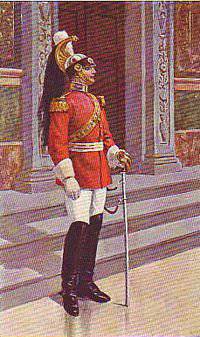 During its existence, the Noble Guard served as the palace guard of the Vatican throne and therefore never participated, in contrast to the papal zouav, in real hostilities. The regiment of heavy cavalry performed only the tasks of an escort of the pontiff and other representatives of the highest clergy of the Catholic Church. During the pontiff's daily walks through the Vatican, he was followed incessantly by two soldiers of the Noble Guard, who served as papal bodyguards.
During its existence, the Noble Guard served as the palace guard of the Vatican throne and therefore never participated, in contrast to the papal zouav, in real hostilities. The regiment of heavy cavalry performed only the tasks of an escort of the pontiff and other representatives of the highest clergy of the Catholic Church. During the pontiff's daily walks through the Vatican, he was followed incessantly by two soldiers of the Noble Guard, who served as papal bodyguards. For a hundred years, from 1870 to 1970. - The noble guard actually existed only as a ceremonial unit, although its fighters were still responsible for the personal safety of the Pope. The total number of the Noble Guard in the period after 1870 was no more than 70 troops. It is indicative that in 1904 the cavalry functions of the division were finally abolished - in the Vatican in its modern form their execution was not possible.
The period of the Second World War was perhaps the most intense in the history of the Noble Guard since 1870, since the unification of Italy and the collapse of the Papal State. Given the unstable political situation in the world and in Italy, including, the personnel of the Noble Guard were given firearms. Initially, the Noble Guard already had pistols, carbines and sabers in service, but after the Papal State was defeated in 1870, the cavalry saber remained the only acceptable weapon, to which the guards returned immediately after the end of World War II.
After the war, the Noble Guard kept its ceremonial functions for another two and a half decades. Guardsmen accompanied the father during trips, carried guard during the papal audiences, guarded the father during solemn services. The command of the guard was carried out by the captain, whose title was equivalent to the general in the Italian armed forces. An important role was also played by the hereditary standard-bearer, who was responsible for the standard of the Vatican.
If the papal Zouawes, who fought for 10 years of resistance to the Garibaldists of the Papal Region, were volunteers from all countries of the world, the Noble Guard, considered an elite unit, was staffed almost exclusively from among the Italian aristocrats who were surrounded by the Holy See. The aristocrats came to the Noble Guard voluntarily, did not receive remuneration for their service and, moreover, paid for the purchase of uniforms and weapons exclusively from their own funds.
As for uniforms, the Noble Guard used two types of uniforms. The parade outfit consisted of a cuirassier helmet with black and white plumes, a red uniform with white cuffs and golden epaulettes, a white belt, white trousers and black riding boots.
Thus, the dress uniform of the Noble Guard reproduced the classic cuirassier uniform and was intended to remind of the history of the unit as a regiment of heavy cavalry. The casual uniform of the guardsmen consisted of a cuirassier helmet with a papal emblem, a double-breasted blue uniform with a red edging, a black and red belt with a gold buckle and dark blue trousers with red stripes. Until the beginning of the twentieth century. in the Noble Guards only aristocrats could serve - natives of Rome, then the rules for admission of new recruits to the Guard were somewhat liberalized and the opportunity for service was granted to people from noble families from all over Italy.
Guarding order - the Palatine Guard
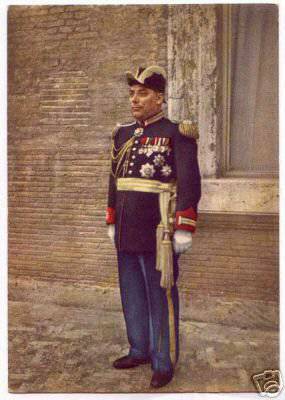 In 1851, Pope Pius IX decided to establish the Palatine Guard, uniting the city militia of the people of Rome and the Palatine company. The size of the new unit was determined in 500 man, and the organizational structure consisted of two battalions. At the head of the Palatine Guard was put a lieutenant colonel, who was subordinate to the chapel of the Holy Roman Church - the cardinal responsible for secular administration in the territory of the Vatican. With 1859, the city of Palatine Guard received the title of Honorary Palatine Guard, its own orchestra was attached to it and was given a white and yellow flag with the arms of Pius IX and the golden Archangel at the top of the shaft.
In 1851, Pope Pius IX decided to establish the Palatine Guard, uniting the city militia of the people of Rome and the Palatine company. The size of the new unit was determined in 500 man, and the organizational structure consisted of two battalions. At the head of the Palatine Guard was put a lieutenant colonel, who was subordinate to the chapel of the Holy Roman Church - the cardinal responsible for secular administration in the territory of the Vatican. With 1859, the city of Palatine Guard received the title of Honorary Palatine Guard, its own orchestra was attached to it and was given a white and yellow flag with the arms of Pius IX and the golden Archangel at the top of the shaft. The Palatine Guard, in contrast to the Noble Guard, took direct part in hostilities against insurgents and garibaldists during the defense of the Papal State. The fighters of the Palatine Guard carried the service of guarding of commissary goods. The number of guards during the war with garibaldists reached 748 soldiers and officers, kept in eight companies. In 1867-1870 the guardsmen also served the pontiff’s residence guard and himself.
In 1870-1929 The Palatine Guard served only in the papal residence. During this time, it was significantly reduced in number. So, on October 17 1892, the number of the Palatine Guard was determined in 341 man, combined into one battalion, consisting of four companies. In 1970, the Palatine Guard, like the Noble Guard, was eliminated by decree of Pope Paul VI.
Legendary Swiss - Vatican Swiss Guard
The only remaining in the ranks up to the present, the division of the armed forces of the Vatican is the famous Swiss Guard. This is the oldest military unit of the world, preserved unchanged until the XXI century and relentlessly following the traditions established in the Middle Ages - during the formation of the Swiss Guard in 1506 year.
The history of the Swiss Guard of the Holy See began in 1506, according to the decision of Pope Julius II. For ten years of pontificate, Julius established himself as a very militant ruler who constantly fought with neighboring feudal lords. It was Julius, preoccupied with the issue of strengthening the papal army, drew attention to the inhabitants of the mountainous Switzerland, who in the Middle Ages were considered to be the best in Europe hired soldiers.
22 January 1506 The first 150 Swiss soldiers were taken in Rome. A year later, 21, in 1527, the Swiss soldiers participated in the defense of Rome against the forces of the Holy Roman Empire. In memory of the rescue of the then Pope Clement VII, for whom the Swiss soldiers gave their lives to 147, the Swiss Guard took the oath on 6 of May on the next anniversary of distant events. The defense of Rome in 1527 was the only example of the participation of the Swiss Guard in real hostilities. It is possible that the ceremonial character of the guard and its wide popularity outside the Vatican, which turned it into a real landmark of the city-state, served as a reason for this particular unit to remain in service after the dissolution of the majority of armed units of the Vatican in 1970.
The reform of the political system in Switzerland itself, which put an end to the practice of "selling" the Swiss to mercenary troops operating throughout Western Europe, did not affect the recruitment of this unit. Before 1859, the Swiss were in the service of the Kingdom of Naples, in 1852 they began to enlist in the service of the Holy See, and after 1870, when the Papal States became part of Italy, the use of Swiss mercenaries in the country was stopped and the only reminder about the once most numerous mercenary force in Europe remained the Swiss Guard, stationed in the city-state of the Vatican.
The strength of the Swiss Guard today is defined in 110 people. It is staffed exclusively by Swiss citizens undergoing training in the Swiss armed forces and then sent to serve the Holy See in the Vatican. The soldiers and officers of the guard come from the German cantons of Switzerland, so German is considered the official language of the teams and official communication in the Swiss Guard. For candidates for admission to the unit, the following general rules are established: Swiss citizenship, Catholic religion, full secondary education, four-month service in the Swiss armed forces, recommendations from the clergy and the secular administration. The age of candidates for admission to the Swiss Guard should fluctuate in the range of 19-30 years, growth - be no lower than 174, see. Only bachelors are accepted into the guard. A soldier guard can change his marital status only with special permission from the command, even after three years of service and obtaining the rank of corporal.
The Swiss Guard guards the entrance to the Vatican, all floors of the Apostolic Palace, the chambers of the Pope and the Secretary of State of the Vatican, is present at all the solemn divine services, audiences and receptions organized by the holy see. The uniform of the guard reproduces its medieval form and consists of striped red-blue-yellow camisoles and trousers, a beret or a morion with red plumes, an armor, a halberd and a sword. Halberds and swords are ceremonial weapons, as regards firearms, they are in the 1960s. It was forbidden, but then, after the famous assassination of John Paul II in 1981, the Swiss Guard was again armed with a firearm.
Swiss guards are provided with clothing, food and accommodation. Their salary begins with the number in euro 1300. After twenty years of service, the guards can retire, amounting to the last salary. The service life of the contract in the Swiss Guard ranges from a minimum of two years to a maximum of twenty-five. Guard duty is carried out by three teams - one is on duty, the other serves as an operational reserve, the third is on vacation. Changing the guard commands is carried out in 24 hours. During ceremonies and public events, service is carried out by all three teams of the Swiss Guard.
The following military ranks were introduced in the Swiss Guard divisions: colonel (commandant), lieutenant colonel (vice-commandant), caplan (chaplain), major, captain, sergeant-major, sergeant officer, corporal, vice-corporal, alebardist (private). Commanders of the Swiss Guard are usually nominated from among Swiss army or police officers with relevant education, experience and suitable for performing duties according to their moral and psychological qualities. Currently, with 2008, Colonel Daniel Rudolf Anrig, the Swiss Guard of the Vatican, is in charge. He is forty-two years old, he served as a guard in the rank of alebardist back in 1992-1994, then graduated from the University of Friborg with a degree in civil and ecclesiastical law, headed the criminal police of canton Glarus, and then, from 2006 to 2008. was the general commandant of the canton of Glarus.
The Swiss Guards, as befits the guards of the Holy See, have the glory of impeccable morale warriors. However, their authority was questioned by the loud murder that took place in the Vatican 4 in May 1998. On this day, Alois Estermann was appointed commander of the Swiss Guard, the thirty-first in a row. A few hours later, the corpse of the new commander and his wife was found in the service apartments of the colonel. A forty-four-year-old veteran of the unit (it was he who in 1981, during the assassination attempt, defended Pope John Paul II) and his wife were shot, the third body was lying next to them - the twenty-three-Corporal Cedric Thorny, who apparently had shot the commander and his wife , after which he shot himself.
Since this incident cast a shadow not only on the famous Swiss Guard, but also on the holy throne, the official version was put forward - Thorney dealt with the colonel, not finding his name in the list of guardsmen presented for the award. However, in Rome, and then around the world, more “hot” versions spread - from the machinations of the mafia or masons to the corporal’s jealousy to the colonel because of his relationship with his wife, a Venezuelan citizen, from the “recruiting” of the late commander Estermann of East German intelligence, that he was retaliated, to possible Sodomite contacts between a forty-four-year-old officer and a twenty-three-year-old corporal. The subsequent investigation did not give any intelligible information about the reasons that prompted the corporal to kill two people and commit suicide, in connection with which the official version of the court that closed the case was Cadric Thorny’s sudden insanity.
Nevertheless, the Swiss Guard remains one of the most prestigious military units in the world, the selection to whose ranks is much stricter than in most other elite military units of other states. For the world community, the Swiss Guard has long been one of the symbols of the Holy See. She makes films and television reports about her, writes articles in newspapers, and numerous tourists who come to Rome and the Vatican love to take pictures of her.
Finally, completing the conversation about the armed units of the Vatican, it is impossible not to note the so-called. "Papal gendarmerie", as the Vatican City State Police Gendarmes Corps is unofficially called. On it lies all the real full responsibility for the security of the Holy See and ensuring public order in the Vatican. The competence of the Corps includes security, public order, border control, road safety, the criminal investigation of criminals and the direct protection of the pontiff. The service in the Corps is 130 people led by the inspector general (with 2006 g. - Dominico Jani). Selection to the Corps is carried out according to the following criteria: age from 20 to 25 years, Italian citizenship, experience in the Italian police for at least two years, recommendations and impeccable biography. 1970 to 1991 The corps was called the Central Security Service. Its history began in 1816 under the name Gendarmerie Corps, and until the reduction of the number of Vatican armed forces it remained in the status of a military unit. The modern Vatican does not need full-fledged armed forces, but the absence of its own army of a dwarf theocratic state does not mean the absence of a full-fledged political influence on which the Holy See still surpasses many countries with a million people and large armed forces.
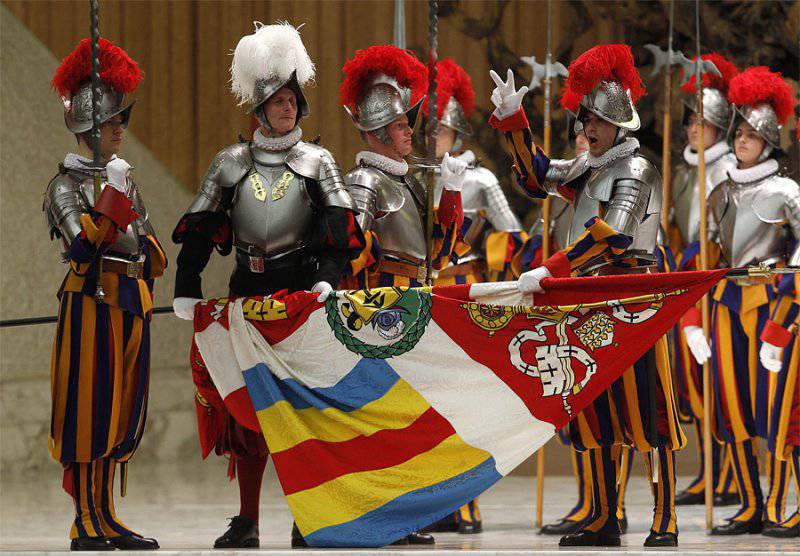
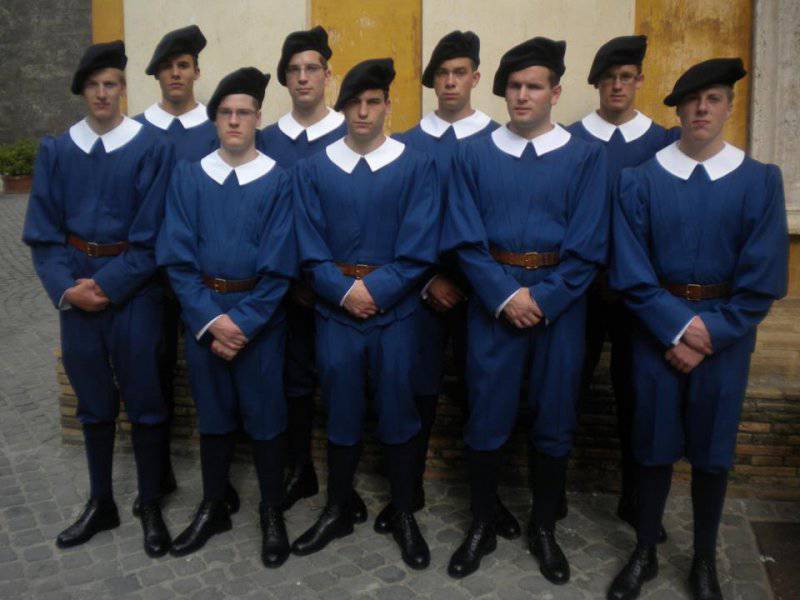
Information